Lupine Publishers | Journal of Veterinary Science
Abstract
Since yeast is robust with high viability under a range of environmental conditions and can be culture very easily so yeast cultures are more commonly used as a feed supplements in livestock feeding systems. These cultures have positive impact on microbial population in gastrointestinal tract and they increase the beneficial activities associated with these microorganisms that has indirect impact on animal performance. Saccharomyces cerevisiae and Aspergillusoryza are the most important yeast products and they are very significant for the manipulation of rumen metabolism.
It is stated by most of the researchers that yeast culture supplementation has positive impact on carcass characteristics, nutrient digestibility, feed intake and the growth performance of the goats in cost effective way but on the other hand some of the scientists do not support that results and they concluded that yeast supplementation in the diet of goats and other ruminants do not have any significant influences on animal performance, carcass characteristics and other features. Step by step, this paper will make the detail evaluation of the use of dietary yeast and its product in the feeding regime of meat type goats, impact of yeast on goat physiognomic features such as growth performance, feed efficiency, digestibility and meat quality.
Introduction
Goat farming and its products
All around the world, sheeps and goats play an important role in small scale farming systems. Goat farming is very beneficial from economic point of view. It provides many products but meat and milk are the major products. Food is necessary to stay alive. Among the humans religion is the major factor that influences the choices of food. Muslims and Jews are very careful and they only allowed eating halal food such as halal meat and drinks. Halal meat is a meat that obtained from the animals such as goats, sheeps, cattle and chicken that slaughtered under the rules provided by Islam and halal meat do not contain any ingredient from haram animals such as pig etc. [9].
Goat meat is highly nutritious, internationally it is known as lean red meat [10-12]. In most of the developing countries goat meat is very important source of protein [13]. It is one of the staple meats in human diet. It comprises 63 percent of all red meat that consumed worldwide [14]. Goat meat is healthy and better substitute as compared to other red meats. It contains low level of calorie, fat, cholesterol (Table 1) [15] buthas high levels of iron and it becomes more popular widely among general population so its demand (as alternative low fat meat) increasing continuously [16]. However, goat meat has necessary fatty acids this is because of the fact that goats deposit greater level of polyunsaturated fatty acids than other ruminants [17,18]. Moreover, goats extensively use for the provision human consumable milk [19]. Pakistan is the fourth largest milk producing country in the world.
Source: USDA (2001)
Approximately 0.7 million tonnes of the milk is produced by goats in Pakistan which is Only 0.2 percent of the total milk produced in the country as shown in Table 2 [20]. Scanty information is available regarding the physiological and chemical facts about the unique quality of goat milk. It contains greater level of short and medium chain fatty acids; these fatty acids are remedial against many diseases and disorders [21]. Goat milk is easier to digest than cow’s milk because it possesses smaller fat globules than cow’s milk [22]. Goat’s milk helps to prevent iron deficiency and bone demineralization because it contains higher vitamins and mineral contents than human milk as shown in Table 3 [23].
Source: FAOSTAT (2008)
Animal hair fibers are more soft and fine than other fibers but they are scarce. Factors such as genetic factors and climatic conditions make it difficult to produce these fibers on large scale. Hair fiber is another very important product of goat farming especially pashmina. All over the world the finest fiber produced by the animals is pashmina that produce in large quantity. It is formed by the hair of Asian native domesticated goat named as Capra hircus [24]. China, Mongolia, Iran, Afghanistan, Pakistan, Nepal and India are the chief fiber producing states. Among all these countries china is the major pashmina producer that produce about 70 percent of the total pashmina production. Mostly, pashmina used to make shawls, scarves, gloves, blankets and other fabrics that manufactured manually or are hand spun [25]. It is protenacious in nature which have 18 amino acids containing polyamide polymer and just like wool α- keratins are arranged helically that is why it is chemically similar to wool and mohair fibers [26].
Yeast cultures as a feed supplements in livestock
In order to support metabolic process all living organisms require essential nutrients, to keep themselves alive. In recent years, use of live microorganism and their products as a feed supplements for ruminants is very common. In many types of production systems microbial supplementations have beneficial impact on animal performance. Outcomes of many experiments indicated that the addition of yeast in the diet of goats and cattle is advantageous [27-30].According to Putnam et al. [29] supplementation of yeast culture in the diet of dairy cows results in the rise in dry matter intake that cause further increase in the milk yield and the amount of milk protein in these animals. Yeast cultures (YC) contain dried yeast cells and these are actually microbial supplements. From many years these cultures use to increase the growth performance of animals. These cultures has positive impact on microbial population in gastrointestinal tract and these cultures increase the beneficial activities associated with these microorganisms that has indirect impact on animal performance [31].
Yeast varieties and its products in small ruminants
In many parts of the world there is a trend to use the yeast products (YP) as a feed additive in the diet of ruminants. Different yeast products are produced by many companies with variable trade names but a limited number of YP have been evaluated under controlled research studies. Saccharomyces cerevisiae and Aspergillusoryza are the yeast products and they are very important for the manipulation of rumen metabolism. Agarwal et al. [32] performed an experiment in which they use different strains of S. cerevisiae as a microbial feed additive and they reported that S. cerevisiae strain NCDC 49 is the best strain because it can tolerate the stressed conditions in gastrointestinal tract of animal. Yeast strains differ in their ability to stimulate the ruminal bacteria. It was reported by Dawson and Hopkins [33] that out of 50 only 7 strains are capable to stimulate the growth of bacteria that digest fiber from the rumen so care should be taken to select S.cerevisiae strains for use in yeast culture preparation of ruminants. Baker’s yeast strains and Brewer’s yeast strains vary in their capabilities to stimulate the critical groups of ruminal microorganisms and former strain has limited capability in this kind of stimulation [34]. According to Zelenak et al. [35] ruminal hemicellulose digestibility increase by the addition of live yeast product Yea-Sacc to the diet when substrate contains 20 percent and 50 percent barely in vitro.Feeding system and yeast addition
Feed is the essential component in livestock farming and different experiments have been conducted to improve the quality of feeds given to the ruminants. Feed additives has positive influence on digestion rate and leads to the better growth performance, this is because of the fact that feed additives increase gut health of the animals [36]. As probiotics, yeasts are gaining popularity in fattening system. It is robust with high viability under a range of environmental conditions and can be culture very easily [37]. Many researchers proposed that supplementation of yeast culture in the diet up surge feed intake [38,39], nutrient digestibility [40] and the rate of growth [41] in cost effective way [42]. According to some investigators addition of yeast in the feed of meat producing ruminants leads to the variable growth responses that vary from no significant rise in average daily gain to an increase of greater than 20 percent. In this case the average daily gain was 8.7 percent [43].There are various feeding systems such as high input feeding system, extensive feeding system, intensive feeding system, fodder based feeding system and grain based feeding system, use of yeast as a probiotic in these systems results in variable responses for example Shankpal et al. [44] conducted an experiment in India on Surti goat Kids. In their experiment, these scientists raised their goats under total mixed ration based feeding system with the supplementation of yeast to access its effect on growth performance, digestibility, feed conversion efficiency and feed intake of these kids. Total mixed ration (TMR) based feeding system actually involve mixing of all feedstuffs in an equal ration with respect to their nutritive value so this system supplies an ample amount of nutrition and energy to the animals which enable them to attain maximum performance. These Indian scientists concluded that this inclusion of yeast in feeding system had positive impact on all the 4/8 Citation: Memoona N, Kashif I. Use of Dietary Yeast and its Products in the Feeding Regime of Meat Type Goats. Con Dai & Vet Sci 1(2)- 2018. CDVS.MS.ID.000108. described parameters and also results in 6.66 percent lower feed cost in the experimental group than control group [44].
Furthermore, many scientists conducted an experiments on different animals raised under intensive feeding system for example Kawas et al. conducted an experiment on Pelibuey male lambs in mexico. These lambs were raised under intensive feeding system with the supplementation of yeast culture and sodium bicarbonate in their finishing diets to check its effect on growth rate and other parameters. At the end of the experiment these scientists concluded that supplementation of yeast in the finishing diet of intensively fed lambs has no significant impact on growth rate, digestibility and rumen pH [45]. Outcomes of this study were similar with the work of some other scientists who concluded that the addition of yeast in the finishing diets of intensively fed bulls has no impact on their growth rate [46-48]. Rearing of the kids under grain based feeding system is helpful to fulfill their nutritional requirements which have positive impact on their growth. However supplementation of diet with yeast enhances these beneficial impacts. According to Nisbet et al. [49] for the fattening ruminants addition of malate and yeast in grain based diets has much more beneficial influences and important for animal health [49].
Effect of yeast on the digestibility and feed intake
Supplementation of yeast in feed improves the digestibility of nutrients and results in higher production of carboxymethyl cellulase activity in rumen [50,51]. Yeast culture leads to the beneficial changes in the digestion by positively influencing the ruminal fermentation. In India it is demonstrated by Kumar et al. [52] that yeast culture has positive impact on feed intake and process of digestion in rumen. On the other hand, some scientists conducted an experiment in Turkey to demonstrate the variations in ruminal fermentation and nutrient degradability of some feedstuffs due to the supplementation of live yeast culture in diet of yearling lambs. In their study they use corn DDGS as a protein source, barley grain as an energy source and wheat straw as roughage and they concluded that live yeast addition in diet has no impact on dry matter (DM) degradability but it reduce the degradability of corn dried distillers grains with soluble (DDSG) in rumen.Better feed intake has positive impact on animal production [53]. Within 6-8 hrs after meal yeast culture supplementation stimulate the higher degradation of solid feeds and higher intake of dry matter. Dry matter intake is the part of initial rate of fiber digestion. It is reported that yeast culture supplementation increase dry matter intake in some studies [40,54] but not in other studies [55,56]. Dawson et al. [57] demonstrated that yeast culture supplementation has pivotal role in digestion in those animals that maintained at high forage diets In South Brazil, Lima et al. [58] analyze the impact of inactive dry yeast (S. cerevisiae) from sugar cane as protein source on dairy goat performance and they reported that dry yeast supplementation in goat’s diet cause lower intake of dry matter and organic matter intake as compare to the soybean + dry yeast diet. This is because of the fact that dry yeast has very fine texture and unusual aroma from sugar cane that cause decrease in the intake of dry matter. Williams [59] confirmed that the quantity of rumen cellulolytic bacteria was amplified by yeast supplementation, exclusively in high concentrate diets.
Effect of yeast addition on growth performance
Many studied demonstrate that diet supplementation with yeast improves the growth performance in finishing lambs [60], calves [61] and bulls [46,47]. According to Haddad et al. [62] yeast supplementation in fattening sheep diet increase the weight gain. In Turkey, Bugdayci et al. [63] conducted an experiment on Saanen male kids and they reported that live yeast supplementation do not influence the live weight gain in goats but some researches do not support this idea [64,65]. However, Mikulecet al. [66] stated that there is no influence of live yeast supplementation on weight and weight gain in lambs. Titi et al. [67] performed an experiment in Jordanand demonstrated that live weight gain and live weight were not affected by the yeast culture supplementation in both awassi lambs and Shami goat kids.Abou-ward [68] conducted an experiment on lambs and he find out that in average daily gain and dry matter intake significant upsurge occur in lambs as a result of feeding on the ration that contain at least 0.1 percent yeast culture. Rise in dry matter intake was because of the stimulation by cellulolytic bacteria [29,30,54,69]. Some Brazilian investigators reported that supplementation of live yeast never influence lamb performance such a dry matter intake, daily live weight gain, total live weight gain and final live weight [70]. However, it was also observed that the addition of 2.5 to 5g of commercial yeast in the diet of Nubian goats fed sorghum (whole plant) has significant impact on daily live weight gain [71].
Effect of yeast addition on slaughter and carcass traits
Particularly with reference to small ruminants scarce work had been published regarding the impact of yeast culture supplementation on carcass characteristics. Titi et al. [67] reported that yeast culture supplementation has no impact on cold dressing proportion and hot carcass weight of Shami goat kids but yeast culture supplementation decrease the cold dressing proportion, overall muscle/bone ratio and hot carcass weight in lambs. Carcass weight reduced in lambs because of the enlargement of the digestive tract due to higher dry matter intake (Table 4). It is demonstrated by kawas et al. [60] that in the lambs that were fed with high grain finishing diet, there is no impact of yeast culture supplementation on dressing proportion and chilled carcass weight of these lambs.
Table 4: Carcass characteristics of Awassi lambs and Shami goat
kids as influenced by yeast culture (YC) addition in diet.
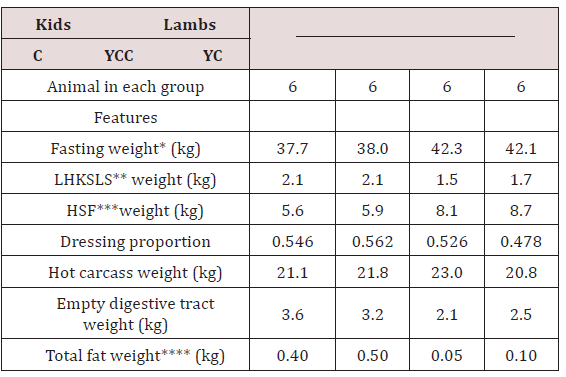
C: control group (without yeast addition).
YC: treatment group (with yeast culture supplementation).
*Average weight of 6 animals.
**LHKSLS: weight of liver+heart+kidneys+spleen+lungs+sweetbread.
***HSF: weight of head+skin+feet.
**** fat of heart+kidney+pelvic.
Source: O’Connor (1994)
Similarly, Freitas et al. [72] reported that in different breeds of goats inclusion of dry yeast has no influence on hot and cold carcass weight, true carcass yield and carcass compactness index. According to Bugdayci et al. [63] live yeast supplementation in diet has no influence on hot and cold carcass yield in goats as shown in (Table 5) [63]. Similarly, investigators failed to find out any positive impact of yeast culture supplementation on carcass characteristics and composition in bulls or steers [73]. In the same way, some scientists reported that supplementation of S.cerevisiae results in the improvement of lamb fattening performance without any significant alteration in carcass traits [74].
p<0.05
C: Control group
S: Group served with sucrose added diet
S+LYS: Group served with sucrose and live yeast culture added diet
Source: Bugdayci et al. (2016)
Effect of yeast addition on meat quality
Growth rate of goat population is high (3.5 percent per annum) because of preference of goat meat [75]. Meat quality is the standard term that uses to describe the properties and perceptions of meat. Goat meat is highly nutritious internationally it is known as lean red meat [10-12]. It has course texture, dark red colour and as compare to lamb meat it has different flavor and aroma, characteristically [76]. Sethy et al. [77] observed that redness and tenderness of meat increase but shear force value decrease as a result of addition of 0.3 mg Seas selenium yeast and 100 IU vitamin E in goat diet. Similarly it was proposed by Morrissey et al. [78] that supplementation of diet with selenium yeast results in the rise of α-tocopherol in muscles but decrease the chances of lipid oxidation in muscles.Likewise, Rufino et al. [79] reported that the addition higher level of inactive dry yeast in the diet of lambs improves the meat quality and carcass characteristics by decreasing the level of intramuscular and subcutaneous fat but by increasing the level of meat crude protein and ash concentration. Dry yeast addition in the diet of different goat breed does not influence the values of cooking loss and shear force value [72]. Some investigators concluded that quality of meat improved and shelf life extend as a result of supplementation of diet with Selenium yeast and vitamin E because it enhanced antioxidant status in the muscle [80]. Effect of yeast supplementation on lamb meat quality has also been demonstrated by Titi et al. [67] who concluded that the addition of live cultures of S.cerevisiae yeast in diet leads to the significant change in the chemical composition of meat.
Conclusion
For more Lupine Publishers Open Access Journals Please visit our website: https://lupinepublishers.us/
For more Journal
of Veterinary Science articles Please Click Here:
https://lupinepublishers.com/dairy-veterinary-science-journal/
https://lupinepublishers.com/dairy-veterinary-science-journal/
To Know more about Open
access Publishers, click on Lupine
Publishers
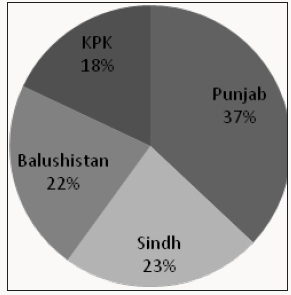

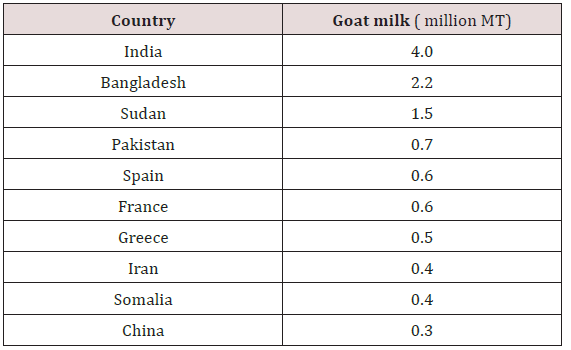
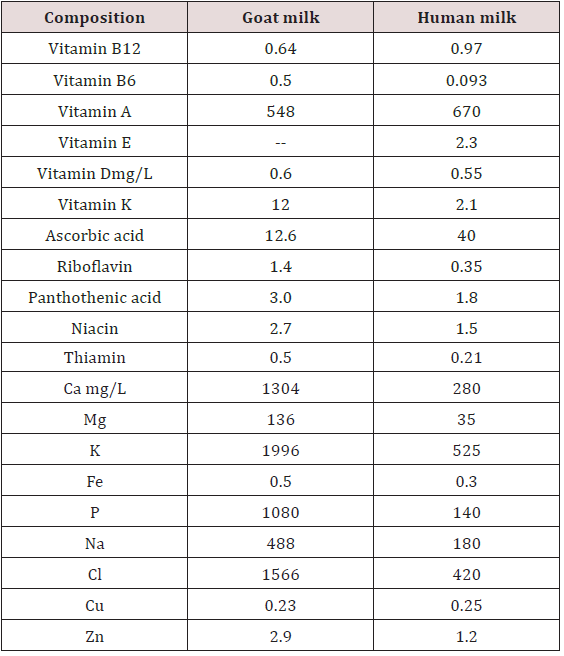
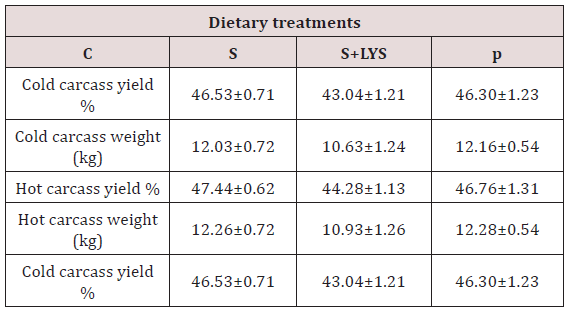
No comments:
Post a Comment
Note: only a member of this blog may post a comment.